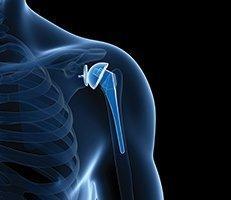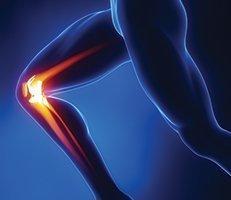After an ACL injury, your doctor may recommend surgery to reconstruct the torn ligament. Because the anterior cruciate ligament does not heal reliably when simply repaired with stitches, ACL reconstruction has evolved to rebuild the ligament in the center of the knee, replacing it with a new ligament. The anterior cruciate ligament keeps your tibia (shin bone) in proper alignment/position with respect to the femur (thigh bone). When the ligament is absent or non-functional due to a tear, the knee will often “give out” or feel unstable with activities that require lateral or rotational stability.
While some individuals can enjoy a full active lifestyle without an ACL, the majority of athletes function best with ACL reconstruction to stabilize the knee. Therefore, not every patient “needs” reconstruction surgery. We do, however, recommend this restorative procedure to the large majority of patients who enjoy an active lifestyle and/or have a physically-demanding profession.
What to Expect During ACL Reconstruction Surgery
 Prior to undergoing reconstruction surgery, most patients will be offered regional anesthesia. These pain management techniques are performed by special anesthesiologists to “numb” the knee and leg, much like the dentist does during a dental procedure. This allows for a lighter anesthetic to be used during the surgery and for a pain-free period up to 36 hours after surgery. You will be asleep and pain-free during the procedure.
Prior to undergoing reconstruction surgery, most patients will be offered regional anesthesia. These pain management techniques are performed by special anesthesiologists to “numb” the knee and leg, much like the dentist does during a dental procedure. This allows for a lighter anesthetic to be used during the surgery and for a pain-free period up to 36 hours after surgery. You will be asleep and pain-free during the procedure.
The tissue that replaces your damaged ligament is either taken from tendons around your knee or from a tissue bank that processes and stores donor (cadaver) tissue. Tissue from a donor is called an allograft, while that from your own body is called an autograft. The most common places that tissue is taken from is the patellar (below the knee cap) tendon, hamstring tendon (the muscle behind your knee) or the quadriceps tendon (above the kneecap).
ACL reconstruction surgery is performed using knee arthroscopy. During this minimally invasive procedure, a fiber-optic camera is inserted into the knee through a small surgical incision. The camera is connected to a video monitor inside the operating room, which allows the surgeon to examine the entire knee and treat all injuries identified at the time of surgery.
The surgeon will fix any damage found and reconstruct the anterior cruciate ligament in the following manner:
- The torn ligament will be removed,
- If your own tissue is being used to make your new ligament, your surgeon will make an appropriate accessory incision to harvest the tendon,
- Tunnels (holes) are then drilled in the femur and tibia at the anatomic sites where the anterior cruciate ligament belongs,
- Your surgeon will attach the new ligament to the bone with screws or other devices to hold it in place. As it heals, the bone tunnels fill in. This secures the new ligament.
At the end of the surgery, your surgeon will close your incisions with sutures then wrap the knee with a bandage and, sometimes, a post-operative brace for protection.
Why ACL Reconstruction May Be Necessary If a torn ACL is left untreated the knee may be prone to continued instability, recurrent injury and, possibly early degenerative arthritis. Reconstruction surgery may be recommended for the following problems:
If a torn ACL is left untreated the knee may be prone to continued instability, recurrent injury and, possibly early degenerative arthritis. Reconstruction surgery may be recommended for the following problems:
- Knee that gives out or feels unstable during daily activities
- Knee pain with or instability with sports or labor
- Inability to continue playing a sport or participate in other activities
- Other ligaments or meniscus have also been injured
While the surgery has been refined in recent years and takes only one to two hours, the recovery requires patience and commitment. A rehabilitation program must be undertaken for about four to six months before patients can return to full activity levels. The success of the surgery ultimately depends upon limiting activities to protect the new ligament in the early post-operative period, then adhering to a consistent and progressive rehabilitation program prior to returning to full activities.
Before ACL Reconstruction Surgery
- You will be asked to participate in a pre-habilitation program to reduce swelling, regain full range of motion and maximize the condition of the muscles in preparation for surgery
- You may be asked to stop taking drugs that make it harder for your blood to clot (e.g aspirin, advil, aleve, ibuprofen)
- If you have any medical conditions, your surgeon will ask that you see your family doctor or internist for a pre-surgical consultation
On the Day of ACL Reconstruction Surgery
- Do not eat or drink anything for 12 hours before the procedure
- Wear comfortable, loose fitting clothing
- Take whatever medications you have been instructed to take with a small amount of water.
ACL Reconstruction Recovery
You will go home on the day of your procedure, usually after one hour in the recovery room. Depending on your particular condition, you may need to wear a knee brace for one to four weeks following the surgery. Most patients use crutches to aid in walking for one to two weeks. Pain medication may also be prescribed. Formal physical therapy typically starts one month after surgery and can last from two to six months depending on surgeon recommendations and patient preference.
Returning to work and normal everyday activities depends very much on the work you do. You could be out of commission for a few days or a few months. A full recovery typically takes four to six months.
Outlook
Anterior cruciate ligament reconstruction is typically a very successful procedure. A torn ligament used to end the careers of athletes. Advancements in the areas of surgery and rehabilitation provide much better results in recent years. Sufferers of knee injuries now face less pain, stiffness, fewer complications from surgery, and a faster recovery time. After ACL reconstruction, most people will return to having a stable, healthy knee.
Next, read the Evolution of Technique.
















